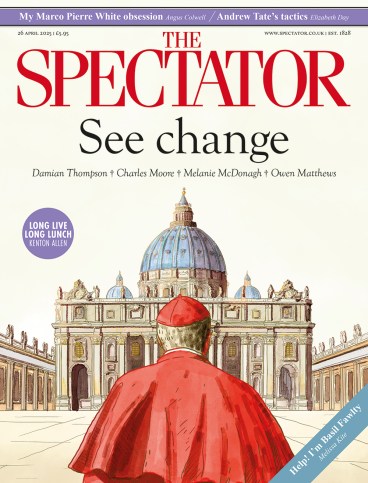
Have you ever suffered from museum blindness? A complete overwhelm at the sheer amount of stuff – often quite similar stuff – that prevents you from focusing on any one item? I know I have. Two-thirds of the way around a museum, even one I have true enthusiasm for, I find my eyes sliding off exhibits, reading the captions but not taking anything in.
I have discovered the antidote in Repast by Jenny Linford. Produced in conjunction with the British Museum, using its collection and curators, it explores the global history of cooking, eating and drinking. At first glance it could simply be a coffee-table book. A thing of beauty, it is heavy to hold, with gorgeous full-page illustrations. But it is far more than that.
‘Food is universal, yet particular,’ Linford begins. The goal of almost all gastronomic writing is to show that duality. Telling the story of food through specific items that span the world and recorded history is an effective way to achieve this. Linford is the author of more than 20 books on food, so is well-placed to take the curious reader on a global journey touching on themes concerned with the way we eat. Her voice is authoritative and intelligent as she leads us through them in broadly chronological order, beginning with hunting and gathering.
She is certainly a skilful storyteller. Her whistlestop tour can convey more in one page than many food monographs in 300. And the illustrations can be surprisingly moving. One, from the 19th-century Japanese series ‘The cloth-fulling jewel river’, of a woman trying to concentrate on peeling fruit while a baby clambers over her shoulder, would be instantly recognisable to anyone who has spent time feeding children. A riot of technicolor in woodblock print from China hums with the busyness of preparing a feast for a New Year celebration, saying much about the universals of family parties, good and bad.
Delightful titbits can be found in the book’s margins, with captions telling miniature stories. A woodblock print of a spiny lobster and grey prawns from 1830s Japan has an inscription which translates as: ‘On a summer’s day/ hot enough to set the calm/ salt-sea to boiling,/ the prawns of Shiba bay/ come bursting forth from their shells.’ The image transforms from a nice painting into something deliciously gruesome, horror lurking behind glorious weather.
But the true joy is in the way the images are juxtaposed. In one double-page spread clashing tones of orange, red and purple decorate a Russian plate from 1919 of a farmer sowing seed – an example of post-revolution crockery celebrating ‘the value of such essential labour and the strength of people formerly disregarded as insignificant peasants’. Opposite, in mellow tones, a woodblock from late 18th-century Japan has women hand-planting rice; while an Ethiopian watercolour from the 1960s, in a riot of greens, shows hand-ploughing and sowing. All three scenes tell similar yet subtly different stories about the hard work of farming.
On another spread a whimsical Beatrix Potter illustration from The Tale of the Flopsy Bunnies sits alongside a busy watercolour of two women digging potatoes in a kitchen garden, painted in 1909. Below them, a striking graphic linocut, ‘Autumn’ by Edward Bawden (1960), shows a gardener working alongside ripened apples and tomatoes.
The mix of media invites contrasts and comparisons: a gold figurine of a llama from 15th-century Peru, ears sticking up, perfect small feet, pert tail and smug expression, stands above a nut-brown, affronted-looking pig from Papua New Guinea. The former would be left as an offering beside human sacrifices to mountain gods during the Inca period; the latter is a 19th-century wooden bowl. Each is made more striking by its proximity to the other.
You could dip in and out of Repast and never fail to find something fascinating. It is that rare beast: a coffee-table book that you want to keep reading.









Comments